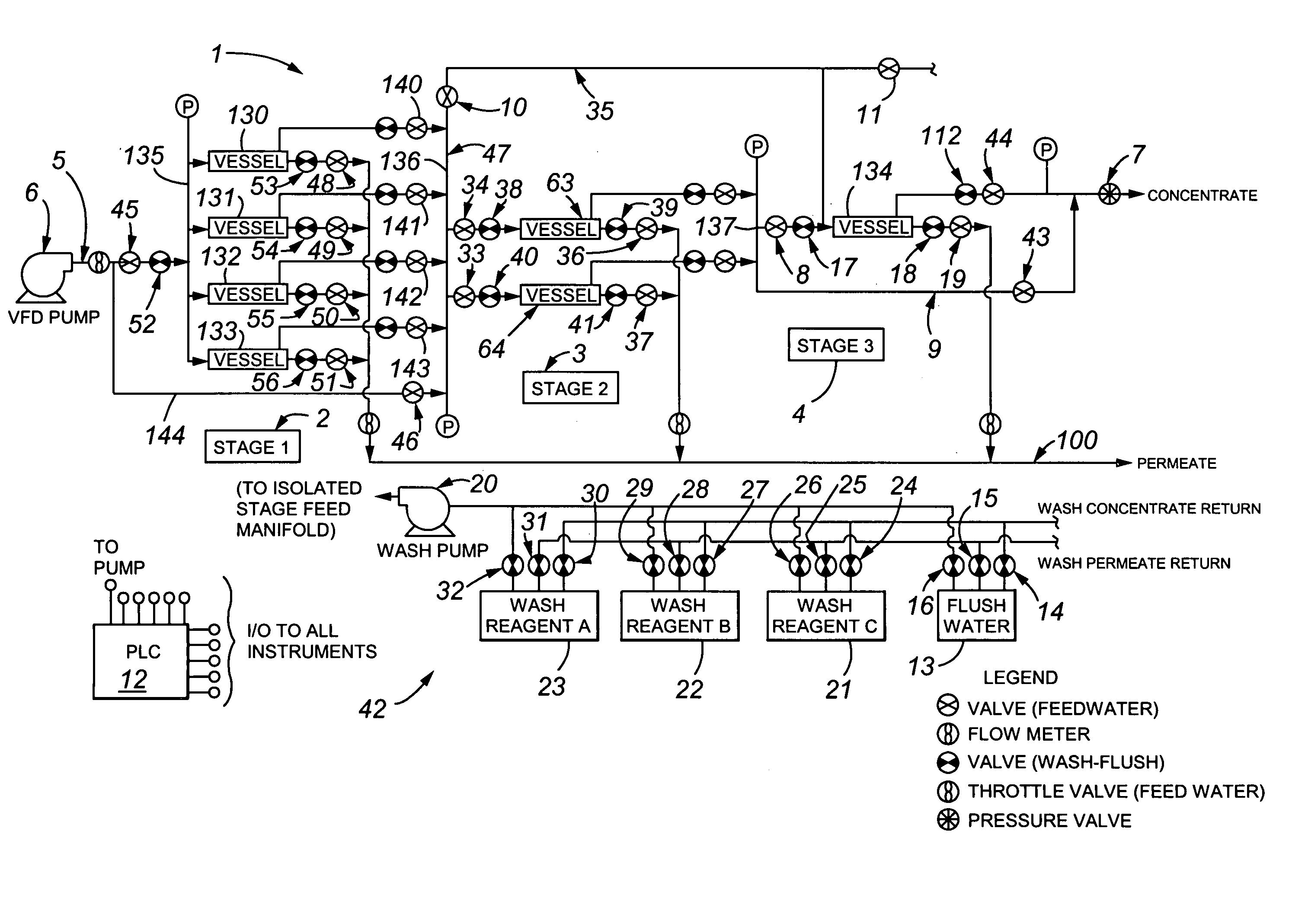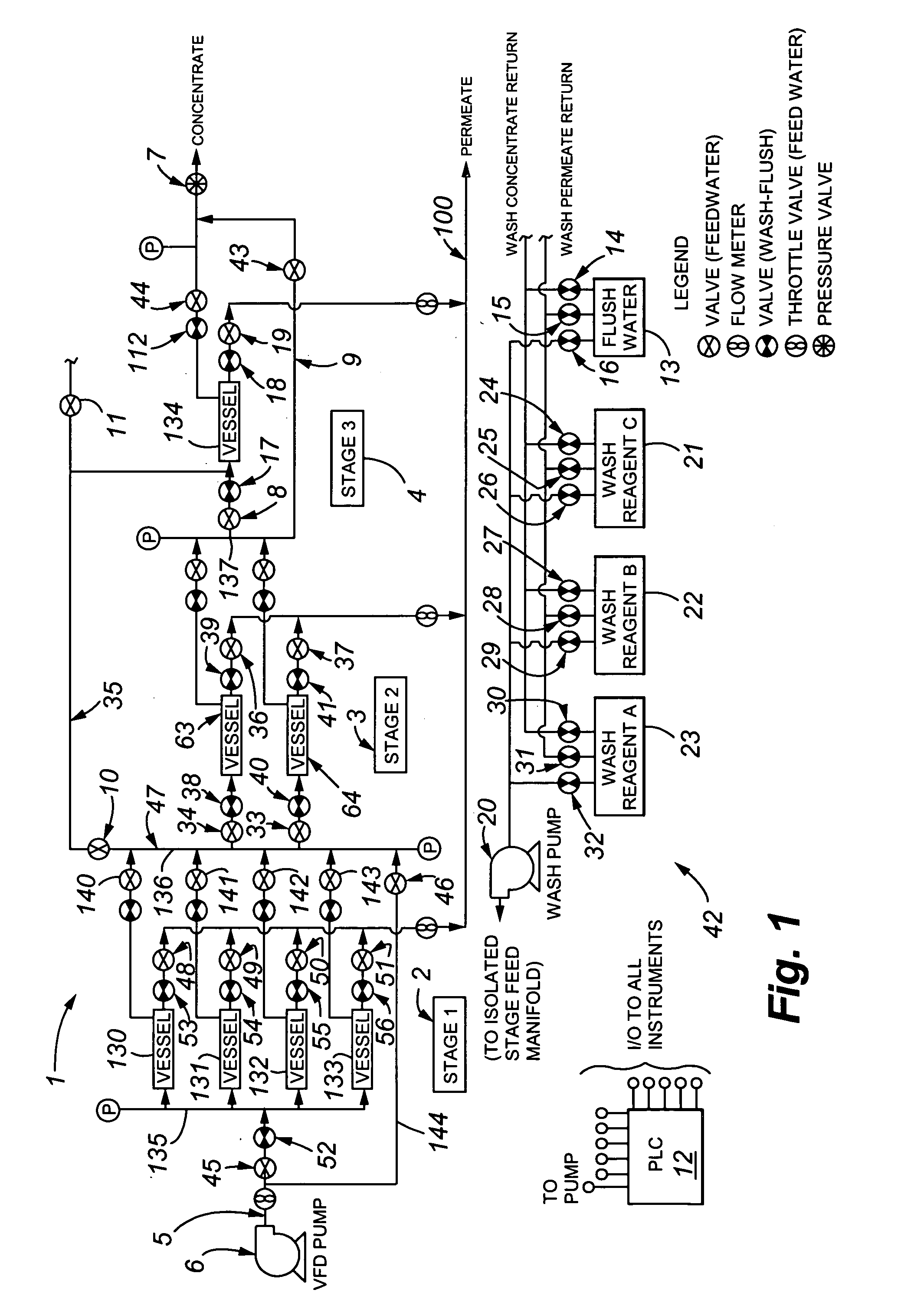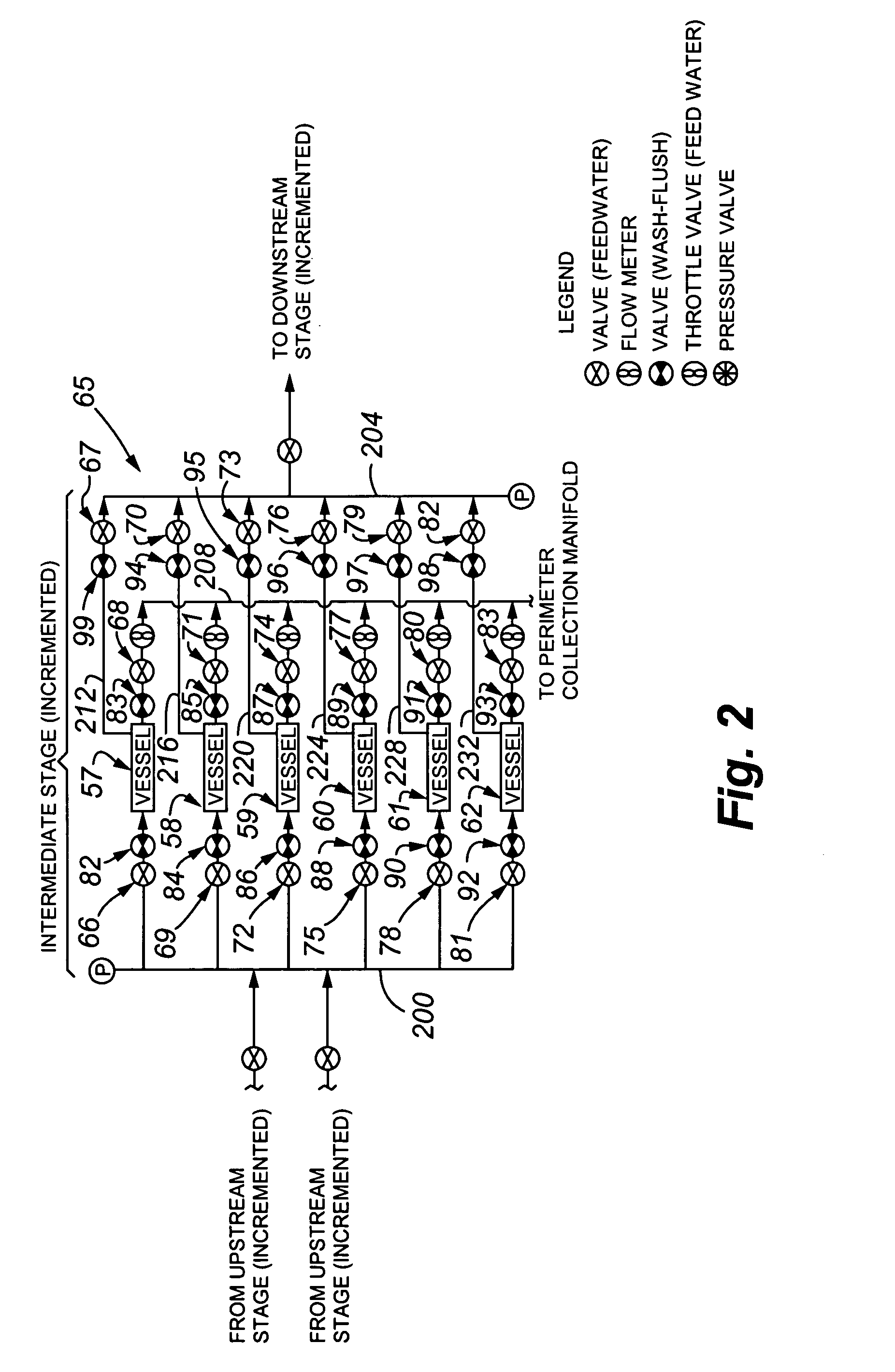Continuous production membrane water treatment plant and method for operating same
a technology of continuous production and water treatment plant, which is applied in the direction of water treatment parameter control, membranes, reverse osmosis, etc., can solve the problems of inhibiting efficient permeate production, high “fouling” potential of membranes, and exceeding solubility limits, so as to reduce the impact and accelerate the
- Summary
- Abstract
- Description
- Claims
- Application Information
AI Technical Summary
Benefits of technology
Problems solved by technology
Method used
Image
Examples
Embodiment Construction
The Architecture for Monitoring and Controlling Membrane Fouling
[0036] The present invention involves a tapered array membrane plant stage-by-stage or stage increment-by-stage increment pressure and permeate flow input / output (I / O) device monitoring system that, together with process-logic-control (PLC) programming, is effective in assigning a degree of fouling value to the stage or stage increment, as measured against a known standard pressure-permeate flow profile for the stage or stage increment. From the assigned degree of fouling of the stage or stage increment, a further process of the invention is the execution of an automated sequence of valve position changes to effect the diversion of feed water from the fouling affected stage of the plant and to pass the diverted water to the following stage of the plant for a stage wash process, or the parallel stage increments in a stage incremental wash process. Furthermore, a series of flush and wash solution valves are PLC re-set in...
PUM
| Property | Measurement | Unit |
|---|---|---|
| pressure | aaaaa | aaaaa |
| pressure | aaaaa | aaaaa |
| pressure | aaaaa | aaaaa |
Abstract
Description
Claims
Application Information
 Login to View More
Login to View More - R&D
- Intellectual Property
- Life Sciences
- Materials
- Tech Scout
- Unparalleled Data Quality
- Higher Quality Content
- 60% Fewer Hallucinations
Browse by: Latest US Patents, China's latest patents, Technical Efficacy Thesaurus, Application Domain, Technology Topic, Popular Technical Reports.
© 2025 PatSnap. All rights reserved.Legal|Privacy policy|Modern Slavery Act Transparency Statement|Sitemap|About US| Contact US: help@patsnap.com



